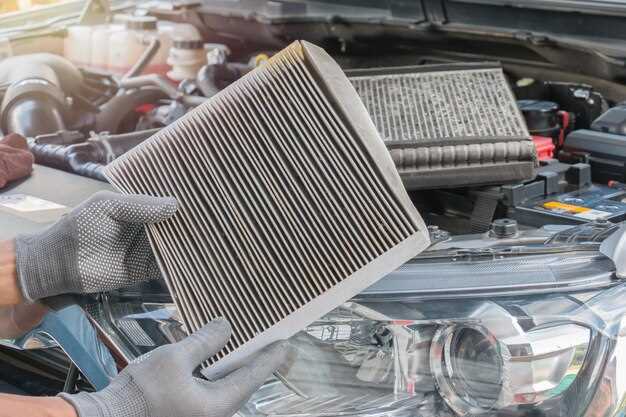
The automotive performance community is constantly seeking ways to enhance engine efficiency and output. One popular modification is the installation of a cold air intake system. This component aims to improve the airflow into the engine, thereby optimizing the combustion process. By allowing cooler air to enter, it can potentially lead to increased horsepower and torque, particularly in high-performance vehicles.
However, while the benefits of improved performance and responsiveness are appealing, there are also important drawbacks that should be considered before making this modification. For instance, the change in air intake temperature and quality can impact engine dynamics, and potential issues with tuning or maintenance may arise. Understanding both sides of the equation is crucial for car enthusiasts looking to make informed decisions about their vehicle’s performance enhancements.
In this article, we will delve deeper into the advantages and disadvantages of installing a cold air intake, helping you to weigh the pros and cons before transforming your vehicle’s air intake system.
Installing a Cold Air Intake: Benefits and Drawbacks

Installing a cold air intake is a popular modification for car enthusiasts who seek to enhance their vehicle’s performance. However, it is important to weigh the benefits against the drawbacks before making a decision.
Benefits:
- Improved Engine Performance: A cold air intake allows the engine to draw in cooler air, which is denser and contains more oxygen. This improved airflow can lead to enhanced horsepower and torque.
- Better Fuel Efficiency: By optimizing the air-fuel mixture, a cold air intake can potentially improve fuel efficiency, especially in high-performance situations.
- Enhanced Engine Sound: Many users appreciate the deeper, more aggressive sound that comes from a cold air intake, providing a more engaging driving experience.
- Easy Installation: Most cold air intake systems are designed for straightforward installation, allowing many car owners to perform the upgrade themselves.
Drawbacks:
- Potential for Increased Dust Intake: Open filter designs can allow more dirt and debris into the engine, potentially leading to wear over time if not properly maintained.
- Water Ingestion Risk: In heavy rain or waterlogged conditions, a cold air intake may increase the risk of hydrolock, which can severely damage the engine.
- Warranty Concerns: Installing an aftermarket cold air intake might void certain aspects of a vehicle’s warranty, depending on the manufacturer’s policies.
- Limited Performance Gains: The performance benefits can vary significantly based on the vehicle make and model, and some drivers may not notice significant changes.
In summary, while installing a cold air intake can enhance performance by improving airflow and engine efficiency, it is essential to consider the potential risks and maintenance requirements involved.
Potential Performance Gains from a Cold Air Intake System
Installing a cold air intake system can provide significant performance enhancements for your vehicle. The primary function of this system is to draw cooler air into the engine, which is denser than warmer air. This increase in air density leads to improved combustion efficiency, allowing the engine to generate more power.
One of the most notable performance gains from a cold air intake is the increase in horsepower. By promoting improved airflow, the engine can breathe easier, resulting in a more efficient combustion process. This efficiency can translate into noticeable power gains, especially at higher RPMs where engine performance is crucial.
Additionally, a cold air intake can enhance throttle response. As cooler air enters the engine more freely, the responsiveness between the accelerator pedal and engine output improves. This allows for a more dynamic driving experience, as the vehicle reacts more swiftly to driver input.
Furthermore, a cold air intake system can also contribute to improved fuel efficiency. With better combustion and more power generated from the same amount of fuel, drivers may experience increased miles per gallon under certain conditions. This is particularly beneficial for those looking to optimize both performance and economy.
Overall, the benefits of a cold air intake system can lead to substantial performance improvements, making it a popular modification among automotive enthusiasts. However, it’s essential to consider other factors such as vehicle compatibility and additional modifications that may be necessary to fully realize these gains.
Common Installation Challenges and Solutions

Installing a cold air intake can significantly enhance your vehicle’s performance, but it is not without its challenges. Understanding these potential obstacles and knowing how to resolve them can make the installation process smoother.
One common challenge involves ensuring that all air intake components fit properly within the engine bay. Incompatible parts can lead to gaps or misalignments, which may result in decreased performance. To tackle this, always double-check the compatibility of your cold air intake with your specific vehicle model before beginning installation. Use manufacturer specifications and consult online forums for advice.
Another issue that many DIY installers face is managing heat shield placement. A proper heat shield is essential for maintaining cold air intake temperatures, but improper installation can lead to heat soak. To avoid this, carefully position the heat shield to ensure it is adequately separating the intake from engine heat. Use thermal insulation materials if necessary for optimal results.
Securing components is often overlooked. Loose connections can lead to air leaks, reducing the intended performance gains. During installation, make sure to tighten all clamps and fittings according to the manufacturer’s instructions. Utilize a torque wrench to achieve the correct fastening specifications if provided.
Additionally, it’s important to consider the sensor relocation that might be required with specific cold air intake systems. Failing to reposition a mass air flow (MAF) sensor properly can lead to engine management issues. Take your time during installation to follow the provided instructions, paying particular attention to the placement of all sensors.
Finally, some users encounter challenges related to restricted access within the engine bay. Limited space can make the installation of air intake systems cumbersome. To address this, use extension tools and flexible sockets to reach tight spots. If necessary, consult a mechanic for assistance, especially for complicated installations.
Impact on Engine Maintenance and Longevity
Installing a cold air intake can significantly influence engine maintenance and longevity. One of the primary benefits of a performance cold air intake is its ability to enhance airflow to the engine. Improved airflow results in better combustion efficiency, which can lead to cleaner operation and less carbon buildup over time.
Reduced carbon deposits contribute to longer intervals between routine maintenance, such as spark plug replacements and fuel system cleanings. This efficiency can extend the overall health of the engine, as cleaner combustion helps prevent premature wear of internal components.
However, cold air intakes also require diligent maintenance to ensure optimal performance. The filters used in these systems need to be regularly cleaned or replaced, depending on driving conditions. Neglecting filter maintenance can result in reduced airflow and potential engine strain, which can counteract any benefits gained from the initial installation.
Moreover, while a cold air intake can augment performance, excessive performance modifications may demand additional considerations in terms of engine tuning and monitoring. A poorly tuned engine can lead to conditions that ultimately shorten its lifespan. Therefore, it’s crucial to balance performance enhancements with regular maintenance practices to safeguard the longevity of the engine.



